Who is this that cometh up from the wilderness, leaning upon her beloved?
Song of Solomon 8:5.
IT WAS a glorious hour when the church came up out of the wilderness. She had done her work well; she had been faithful to her task. She emerged from the wilderness condition to lay the treasures of her hard-fought battles at the feet of the church of the last period, that era which theRedeemer called “the times of the Gentiles.”(Luke 21:24.) The contest had been long. It had not been a Thirty Years’
which has placed tradition above the Bible, but to the faithful churches who adhered through years of darkness and superstition to the original apostolic writings and their uncorrupted translations. This volume, in some small measure, pays tribute to these unsung heroes of the past of the true Christian church.
THE WILDERNESS PERIOD ENDS
“The vision is yet for an appointed time,” said the prophet. (Habakkuk2:3.) God works by fixed times. He
“But thou, O Daniel,” he said, “shut up the words, and seal
thebook , even to the time of the end: many shall run to and fro, and knowledge shall be increased.” (Daniel 12:4.)
What could be meant by that expression, “the time of the end”? Note, it was not the end of time. Evidently, the phrase was intended to describe a comparatively short final stretch of years between the close of the 1260-year prophecy and the end of the world. At “the time of the end” the church would be unfolding to a listening world the meaning of the symbols which had passed before the captive prophet. This in itself would indicate that the church had emerged from the wilderness. Daniel had seen a lion, a bear, a leopard, and a beast with ten horns. These were succeeded by a little horn that would wear out the saints of the
“For then shall be great tribulation, such as was not since the beginning of the world to this time, no, nor ever shall be. And except those days should be shortened, there should no flesh be saved: but for the elect’s sake those days shall be shortened.” (Matthew 24: 21, 22.)
Note, Christ repeatedly mentioned “those days.” The fact that the imperious horn of Daniel 7:25 would be forced to terminate the oppression of the saints at the end of the 1260 years,
“The Holy City shall they tread under foot forty and two months. And I will give power unto My two witnesses, and they shall prophesy a thousand two hundred and threescore days.” (Revelation 11:2, 3.)
Counting, as the Bible indicates, a month to be thirty days, forty-two times thirty equals 1260. What is meant in Matthew 24 by Christ’s expression, “great tribulation”?There have been three periods of tribulation for the Christian church: the first, reaching into the fall of Jerusalem, during which time the Jews persecuted the Christians; the second, reaching to A.D. 325, during which period the pagans greatly afflicted the church; and the third, the 1260-year period (mentioned directly seven times in the Scriptures) when the politico-ecclesiastical power persecuted the Church in the Wilderness.
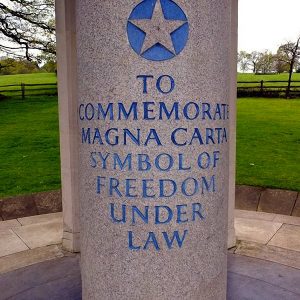
persistently accused of Manichaeism. It was the splendid work of the Albigenses, however, which aroused the alarm of the Papacy and led to the Lateran Council of 1215. This same year will be remembered as the date when the Magna Charta, the first step toward constitutional government, was written by the barons of England. The growth of Bible preaching had evidently been influencing political thinking.
From 1215 on, the increasing severity of papal persecution is seen. This is followed by the spread of the Church in the Wilderness in all lands. Again the blood of the martyrs became the seed of the church. Two examples of this may be cited. The Waldenses, and the churches who believed as they did, though bearing other names, spread all over Europe. Mosheim has already been quoted to prove that, prior to the age of Luther, there lay concealed in almost every country of the Continent, especially in Bohemia, Moravia, Switzerland, and Germany, many peoples in whose minds the principles maintained by the Waldenses, the Wycliffites, and the Hussites were deeply planted. Also in former
IMPORTANT DATES IN CHURCH HISTORY
Several chains of prophecy were given which run more or less parallel to the 1260-year period. Four dates stand out prominently in the latter part of the 1260-year period. In a special

leadership into the foreground. These dates were: 1453, when Constantinople was conquered by the Turks; 1483, when Martin Luther was born; 1492, when Columbus discovered America; and
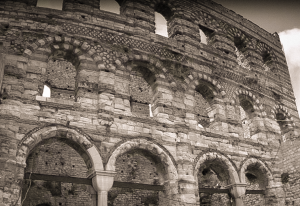
years the ecclesiastical power of Rome had eliminated the study of Greek language and literature. “Knowledge of the Greek language died out in Western Europe,” says one whose pro-Roman leanings are well known.(3) Italy, France, Germany, and England were stunned by the sudden revelations in history, science, literature, and philosophy which came to them. Immediately they appropriated their newly found treasures. Scholars were as much intent upon manuscript hunting as Columbus was upon continent hunting. The greatest treasure accruing to the world by the fall of Constantinople was the recovery of multiplied manuscripts of the Greek New Testament. The vast majority of these manuscripts were the Received Text. Having had only the Latin Bible of Rome, called the Vulgate, the western world in general lacked the exact words written by the apostles of the revelations of Jesus. At this moment appeared the astounding scholar of the age. In erudition Erasmus of Holland has never been surpassed, in the opinion of many. He brought his gigantic intellect to bear upon the realm of classical literature. He was ever on the wing, ransacking libraries and every nook and corner where ancient manuscripts might be found. He divided all Greek NewTestament manuscripts into two classes: those which followed the Received Text, edited by Lucian; and those which followed the Vaticanus manuscript, the pride of the Vatican library. He specified the positive grounds on which he rejected the Vaticanus while receiving the other.(4) And when he brought forth his edition of the Greek New Testament, a new day dawned. This was the edition which all the Protestant churches of that period used. It became the text for Luther’s Bible in German and for Tyndale’s translation in English. Tyndale, an accomplished scholar in seven languages, had been a student of Erasmus’ Greek edition.
LUTHER AND THE REFORMATION
The next epochal date is 1483, the year of Luther’s birth. The name of Luther is almost synonymous with that of the Reformation. As a monk in his cloister cell, his spiritual struggles with God were so powerful that the waves of evangelical feelings which later swept over Europe were, to a certain extent, but the expressions of Luther’s own experience. The
Reformation made vocal the longings of the people for a new heart, a heart like Christ’s, in place of their sinful heart. At first, even for some time, Luther had no thought or desire to break with the Church of Rome. However, the ever-growing power of gospel truth was exalting the Bible above the church. The Papacy refused to surrender its claim that the church was above the Bible. The people were weary with the swarms of monks and nuns who were propagating a vast round of processions, genuflections, prayer beads, amulets, images on the walls of the churches,
It is a serious error to think of the Reformation era, glorious and fruitful as it was, as if it were the golden age of the church, or as if everything was perfect even when it was at its best. The best is yet to be; the best for which all ages have done their work.
See footnote 6
The Reformers
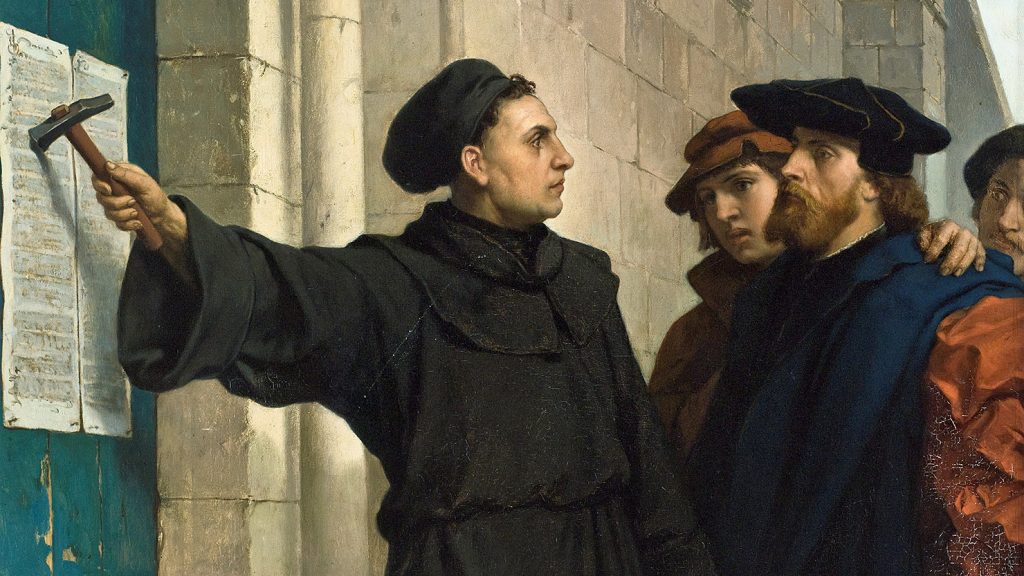
THE BACKGROUND OF THE DAY OF WORSHIP
It was a great moment in the agelong struggle between the Bible and tradition when, in 489 the Roman emperor in his zeal for hierarchical doctrine, closed the notable college established by the Assyrian Church at Edessa. This act resulted in the erection of a barrier between the evangelical East and the papal West. The Church of the East promptly left Edessa, which was just within the border of the Roman dominion, and
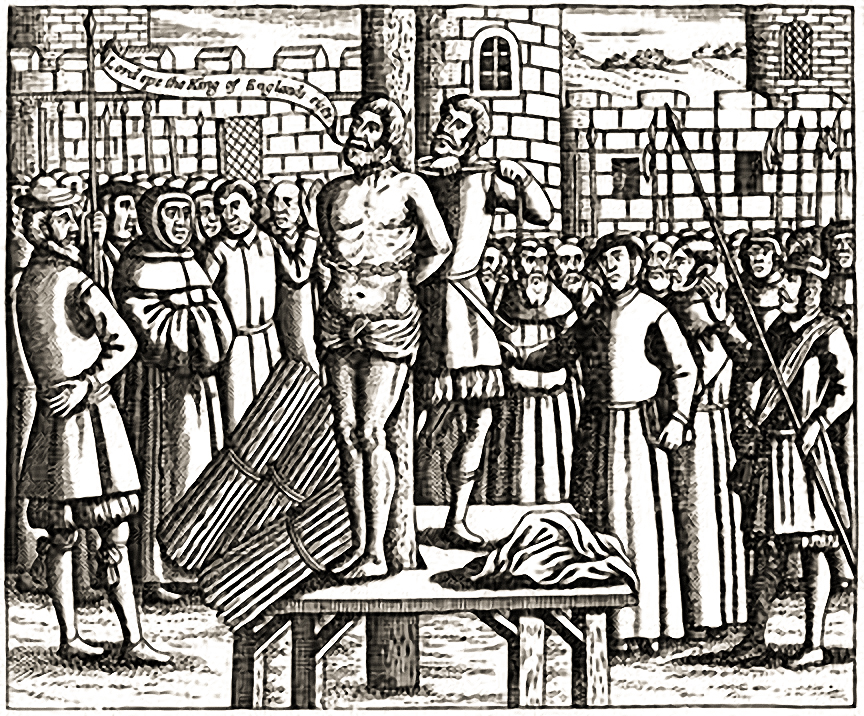
moved the institution to Nisibis, a few hundred miles within the Persian Empire. Here, near the Tigris River, a great university was established, which for a thousand years not only confirmed the Persian Christians in the Judeantype of teachings as against the papal
THE CIVILIZATION OF THE CHURCH OF THE EAST
It has been noted how in the ninth century the civilizing education system of the Church of the East dominated the golden age of the mighty Arabian Empire — so much so that it permeated the literature of China and Japan in the east, and paved the way for the founding of universities in Europe. When the papal armies made a temporary conquest of the city of Constantinople in 1204, many writers make plain the contrast between the high culture and civilization of the nations in which were located Eastern and Asiatic Christianity as compared to the barbarous conditions of the papal nations of Europe. Thus, Arthur P. Stanley writes:
There can be no doubt that the civilization of the Eastern Church was far higher than that of the Western. No one can read the account of the capture of Constantinople by the crusaders of the thirteenth century, without perceiving that it is the occupation of
See footnote 8are fined and civilized capital by a horde of comparative barbarians. The arrival of the Greek scholars in Europe in the fifteenth century was the signal for the most progressive step that Western theology has ever made.
Adeney testifies to the same contrast when commenting upon the conversion of the Russian church in the eleventh century by Eastern Christianity:
Commerce followed the gospel. Art and culture came in its train. A Christian civilization now began to spread slowly through Russia. The consequence was that in the course of the next century this country, which we are now accustomed to
See footnote 9think of as the most backward of European nations, became more advanced than Germany or even France. She took a foremost place in the early part of the Middle Ages. Byzantine culture was now at its height and incomparably superior to the rude condition of the Western nations.
In the middle of this same century, the
The contributions of the Polos to geographical knowledge completely eclipsed those of all other previous travelers. They included the first extensive and reliable account of the riches and the splendors of Indo-China, the Indian archipelago, and China; and they included, too, the first actual information about Japan. So
See footnote 10picturesque was the account, so attractive the story, so marvelouswere the facts disclosed, that thousands read it with unabated interest for generationsafterwards . Columbus tells us that he found it an absorbing narrative. It aroused in many a breast the desire tofollow in the steps of the men whose journeyings it recounted.
The religious motives in undertaking the voyages of discovery were the deepest. Now unrolls the history of how the Jesuits invaded and cruelly oppressed Abyssinia in Africa, persecuted the Church of the East in India, and plotted for dominion in China and Japan. The famous Jesuit, Francis Xavier, exploring the church problems of the Orient, called in 1545 for the establishment of the cruel and bloody Inquisition, which was set up in Goa, India, in 1560. Adeney indicates why this horrible engine was considered necessary:
“In a letter written towards the end of the year 1545, Xavier begged the king of Portugal to establish the Inquisition in order to check ‘the Jewish wickedness’ that was spreading through his Eastern dominions.”
See footnote 11
The “Jewish wickedness” which the Jesuits undertook to fight in the Church of the East meant, among other things, the observance of the seventh day as the Sabbath. War on the Sabbath is precisely what the Jesuits made in Abyssinia, which for centuries kept the seventh day of the week as the Sabbath.
The Mongolian conquest did not injure the Church of the East. On the contrary, a number of the Mongolian princes and a larger number of Mongolian queens were members of this church. It was rather the fierce opposition of the fanatical Mohammedan conqueror, Tamerlane, a century later which brought great grief to the Assyrian Church. Nevertheless,

time Europe was in the convulsions of the dreadful Thirty Years’ War. This was a fierce unsuccessful effort of the Jesuits to destroy Protestantism on the Continent. From the days of Luther until 1648, when the famous Peace of Westphalia terminated theThirty Years’ War, Protestantism could not say that it had gained a secure place under the sun. During this same period and prior to the Reformation there were strong movements in Russia, Bohemia, France, England, and Germany, seeking freedom to observe unmolested the seventh day as the Sabbath. Yet intolerance reigned in Asia and Europe. But it is gratifying to note that in the last period of the Thirty Years’ War, for the first time in the history of the world, a government granted religious freedom. This was the case of Roger Williams in Rhode Island when he made a practical application of the great teaching of Christ which called for the separation of church and state. The spread of religious freedom was bound to be followed by a latter-day message on the binding claims of the fourth commandment.
OTHER SHORTCOMINGS OF THE REFORMATION
Other unfortunate deficiencies of the Reformation might be mentioned,such as the union of church and state. Prophecy seemed to indicate, however, that full return to primitive Christianity of the Bible would not come until the church emerged from its subordinate position, or when the Church in the Wilderness became the Remnant Church. The following words from William Muir indicate the lack of stabilitymanifested by many believers in the Reformation prior to the days of JohnWesley. He writes:
“In
See footnote 12England the masses, who were never really evangelized until John Wesley’s time, changed sides as the monarchs changed and were usually ready to shout with the biggest crowd.”
What was there unusual in the message of John Wesley? It was the emphasis placed by Methodism on redemption through the blood of Christ
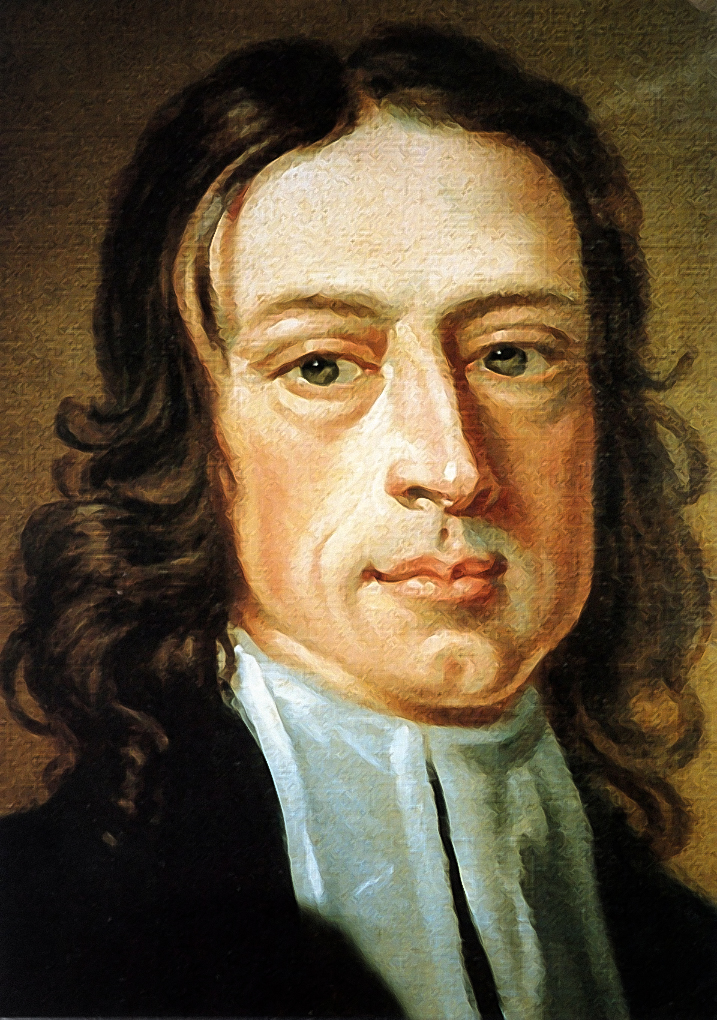
and later established its missions in North America, was strong through its exaltation of the Pauline, not the papal, attitude toward Christ’s substitutionary death. It is stated that when Zinzendorf in 1722 founded Herrnhut on his estates, he preached the doctrine of salvation through the blood of Christ
“The dragon was wroth with the woman, and went to make war with the remnant of her seed, which keep the commandments of God, and have the testimony of Jesus Christ.”(Revelation 12:17.)
THE END OF THE GREAT TRIBULATION
The last of the four prominent dates under consideration in 1491, when Ignatius Loyola, founder of the Jesuits, was born. When it seemed as if the Church of Rome were mined and crushed by the Reformation, the order of the Jesuits was formed, the most powerful and cruel of all the orders within the Papacy. It undertook first of all to capture colleges and universities, then to climb to power in the state. It succeeded in dominating certain nations and in persecuting with unspeakable cruelty that Protestantism which it was invented to destroy. As Thomas B. Macaulay writes of Jesuitic cruelty:
If Protestantism, or the semblance of Protestantism, showed itself in any quarter, it was instantly met, not by petty, teasing persecution, but by
See footnote 15persecution of that sort which bows down and crashes all but a very few select spirits. Whoever was suspected of heresy, whatever his rank, his learning, or his reputation, knew that he must purge himself to the satisfaction of a severe and vigilant tribunal, or die by fire. Heretical books were sought out and destroyed with similar rigor.
The Savior made a clear distinction between the end of the days and the end of the tribulation in the days. He said, “In those days, after that tribulation.” The days, as previously discussed, ended in 1798; but by 1772 every country in the world, even those which are called Catholic, arose in horror and demanded that the pope abolish the order of the Jesuits.
Proof of the subversive influence exercised by the Jesuits, in both spiritual and civil affairs, throughout the four hundred years of their existence, is plentifully evident by the number of times they have been disbanded by the Catholic Church itself, by the Catholic people and by liberal and progressive governments in Catholic and non-Catholic countries. They have been expelled, at
See footnote 16one time or another, (many times over in some countries) from practically every country in the world —-except the United States.
Thus the 1260 years ended in 1798, but the great tribulation can be considered to have ended in 1772. The date 1798 is worthy of fuller consideration.
THE ACCOMPLISHMENT OF THE INDIGNATION
“And some of them of understanding shall fall, to try them, and to purge, and to make them white, even to the time of the end: because it is yet for a time appointed. And the king shall do according to his will
; and he shall exalt himself, and magnify himself above every god, and shall speak marvelous things against the God of gods, and shall prosper till the indignation be accomplished.”(Daniel 11:35, 36.)
Here a persecution against the saints is foretold which would last until“the time of the end.” It has previously been shown that “the time of the end” would begin when the 1260-year period
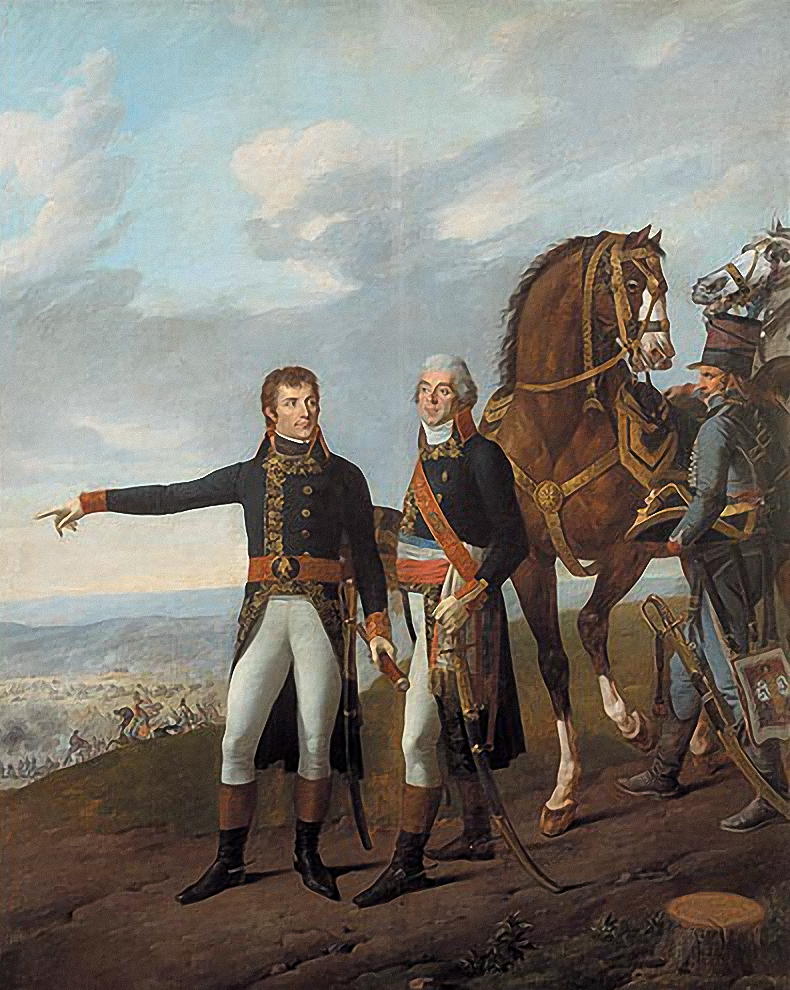
elsewherethan the medieval hierarchy to locate the willful king destined to put anend to the 1260-year period and to inflict a deadly wound upon thedestroyer. What power was swinging into strength, seized with a religious antagonism to the Papacy, about 1798? What other nation could fulfill these specifications better than France, the oldest daughter of the church, driven to
It was his mission — a mission more beneficent in its result than in its means — to break up in Germany and Italy the abominable system of petty states, to reawaken the spirit of the people, to sweep away the relics of an effete feudalism, and leave the ground clear for the growth of newer and better forms of political life….New kingdoms were erected, electorates created and extinguished, the lesser princes mediatized, the free cities occupied by troops and bestowed on some neighboring potentate. More than any other change, the secularization of the dominions of the prince-bishops and abbots proclaimed the fall of the old constitution, whose principals had required the existence of a spiritual alongside
See footnote 17of the temporal aristocracy.
INQUIRY INTO THE PROPHECIES
“But thou, O Daniel,” said the angel, “shut up the words, and seal the book, even to the time of the end: many shall run to and fro, and knowledge shall be increased.”
The Hebrew for the expression “run to and fro,” in its deepest sense, means “to study diligently and minutely,” or “to travel through.” The German Bible, as well as the French, translates this phrase thus: “Many shall search thoroughly and knowledge shall be increased.” What caused so great an increase in Bible searching that it became a study on prophetic prediction? When the delivering of the“deadly wound” to the gigantic ecclesiastical dictatorship had lifted the ban on Bible study and the termination of the wilderness condition of the true church had been so strikingly fulfilled, the question “What next?” was in the hearts of God’s people. This led to a sweeping wave of inquiry into the great chains of prophecy. At this very
Joseph Wolff, D. D., according to his journals, between the years of 1821 and 1845, proclaimed the Lord’s speedy advent in Palestine, Egypt, on the shores of the Red Sea, Mesopotamia, the Crimea, Persia, Georgia, throughout the Ottoman Empire, in Greece, Arabia, Turkistan, Bokhara, Affghanistan, Cashmere, Hindostan, Thibet, in Holland, Scotland and Ireland, at Constantinople, Jerusalem, St. Helena, also on shipboard in the Mediterranean, and at New York City, to all denominations. He declares he has preached among Jews, Turks, Mohammedans, Parsees, Hindoos, Chaldeans, Yeseedes, Syrians, Sabeans,
See footnote 20topachas , sheiks, shahs, the kings of Rgantsh and Bokhara, the queen of Greece, etc., and of his extraordinary labors, the Investigator says: “No individual has, perhaps, given greater publicity to the doctrine of the second coming of the Lord Jesus Christ, than has this well-known missionary to the world. Wherever he goes, he proclaims the approaching advent of the Messiah in glory.
The converted South American Jesuit, the Scotch Presbyterian, and the converted son of a rabbi were followed in the study and preaching of the same pivotal prophecy by William Miller who was an American farmer, a veteran of the War of 1812, and a converted infidel. Later he
THE WORLD’S UNPARALLELED PROGRESS AFTER 1798
When the 1260-year period ended in 1798, when religious freedom had
“And this our life, exempt from public haunt, finds tongues in trees, books in the running brooks, sermons in stones, and good in everything.”
The mind must be free to learn from nature, books, the Bible, or society; to believe according to the dictates of conscience. When this freedom exists, material civilization increases. May
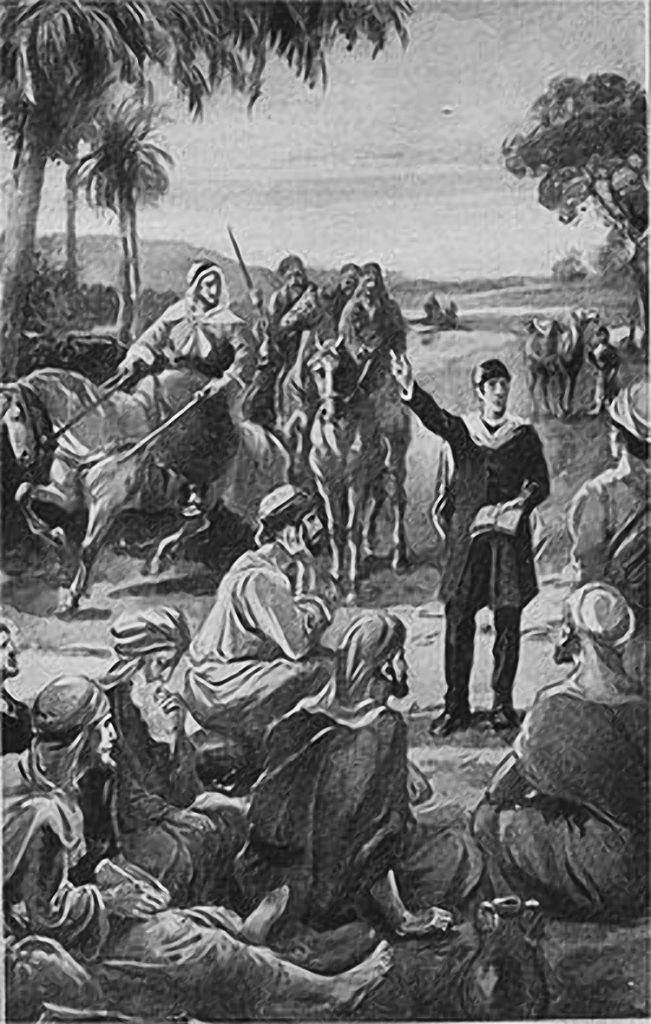
all the gains made by the Church in the Wilderness be preserved! God forbid that civil or religious despotism should regain the ascendancy, reverse all that has been gained since 1798, and send us back into the Dark Ages! The French Revolution, following upon the American Revolution, delivered to the Papacy a wound as it were unto death. For 1260 years Rome had entrenched itself almost invincibly behind two theories: one, the union of church and state; the other, the divine right of kings. It can be easily seen that if monarchs believed that they ruled by divine right, they would favor and exalt the head of that church who would perform the consecration service at their coronation. That period was called the Dark Ages. It took centuries of blood and suffering to open the eyes of men to the colossal evils inherent in these two theories of government. Edgar Quinet,
“No finer triumph of talent in the service of conscience has been put on record. From that day the Catholic religion may date its re-entrance into the national literature.”
See footnote 21
Why was it that in 1833 England believed that the Reformation was the work of God, but fifty years later it believed that the Reformation had been a rebellion, as was pointed out by the historian Froude, who was at Oxford during those years of the movement; and that whereas in 1833 the pope was looked upon as antichrist, in 1883 he was considered the successor of the apostles? The deadly wound to tyranny was being healed and those who inflicted it were being vilified. All the arts of tricky reasoning and of corrupting the records of history reappeared in the
Oxford Movement. Its leaders, many of them Jesuits in disguise, began to build up a case for Romanism. This movement, assisted by gold and by disguised agents from the Continent, spread through the Church of England. It then entered the Protestant theological schools of America. Now is being witnessed the de-Protestantization of the English-speaking world. The pope has now been made
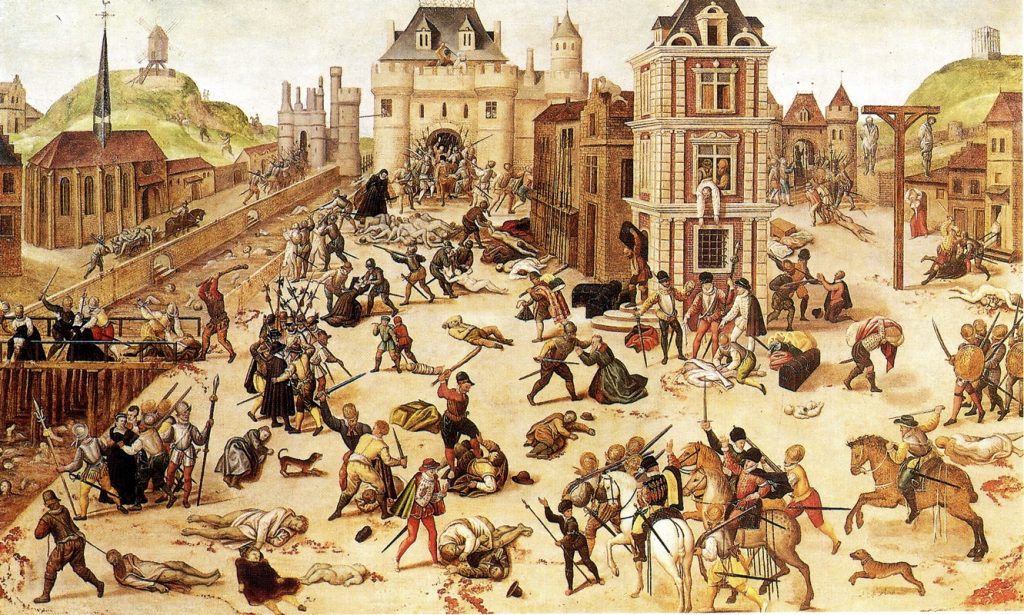
THE APPROACHING AGE
In “the time of the end” stupendous and unprecedented are the scenes through which the Remnant Church must pass. The Remnant Church will occupy a position such as was never before occupied by God’s people. Her message will embrace all the messages of the past and bring them to
“The nations were angry, and Thy wrath
is come , and the time of the dead, that they should be judged, and that Thou shouldest give reward unto Thy servants the prophets, and to the saints, and them that fear Thy name, small and great; and shouldest destroy them which destroy the earth.”(Revelation 11:18.)
Paganism is symbolized in the book of Revelation by the great red dragon
“If any man
worship the beast and his image, and receive his mark in his forehead, or in his hand, the same shall drink of the wine of the wrath of God, which is poured out without mixture into the cup of His indignation.” “I looked, and behold a white cloud, and upon the cloud One sat like unto the Son of man, having on His head a goldencrown, and in His hand a sharp sickle.” (Revelation 14:9, 10, 14.)
This message proclaimed by the Remnant Church will take away blindness from those who are willing to see. The most dreadful language ever used in the Scriptures is that which foretells the visitation of the seven last plagues, the last divine indignation, the untempered wrath of God:
“I saw another sign in heaven, great and marvelous, seven angels having the seven last plagues; for in them is filled up the wrath of God.” (Revelation 15:1.)
That the seven last plagues are leveled against the beast and his image is plainly indicated. The long pent-up indignation of Jehovah in His wrath against hypocrisy finally bursts forth. The Bible says that “the kings of the earth, and the great men, and the rich men, and the chief captains, and the mighty men, and every bondman, and every freeman, hid themselves in the dens and in the rocks of the mountains,” asking the mountains and rocks to fall on them and to hide them,
“for the great day of His wrath is come; and who shall be able to stand?”(Revelation 6:15-17.)
When this is over, the revelator beholds that
“the heaven departed as a scroll when it is rolled together; and every mountain and island were moved out of their places.”(Revelation 6:14.)
From now on there will be no dull moments among the children of men. How solemn and how unprecedented are the scenes through which the last church passes, preparing and perfecting a character which will be acceptable to the Lord Jesus Christ when He returns! The events of
“Seeing then that all these things shall be dissolved, what manner of persons ought ye to be in all holy conversation and godliness, looking for and hasting unto the coming of the day of God.”(2 Peter 3:11, 12.)
May that day, so vividly described in the following words, find all who read these pages ready:
Amid the reeling of the earth, the flash of lightning, and the roar of thunder, the voice of the Son of God calls forth the sleeping saints. He looks upon the graves of the righteous, then raising His hands to heaven He cries, “Awake, awake, awake, ye that sleep in the dust, and arise!” Throughout the length and breadth of the earth,the dead shall hear that voice; and they that hear shall live. And thewhole earth shall ring with the tread of the exceeding great army ofevery nation, kindred, tongue, and people. From the prison houseof death they come, clothed with immortal glory, crying, “O death,where is thy sting? O grave, where is thy victory?” And the livingrighteous and the risen saints unite their voices in a long, glad shoutof victory.
See footnote 22
This consummation will truly be Truth Triumphant.
“Here are they that keep the commandments of God,and the faith of Jesus.”(Revelation 14:12.)
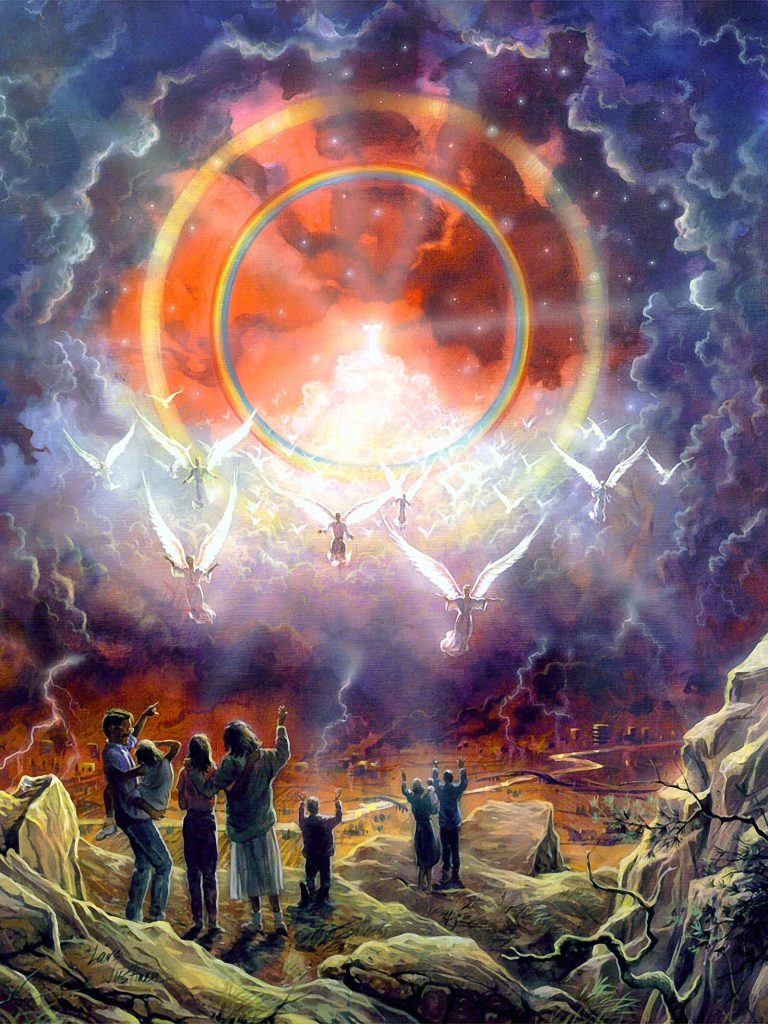
___________________________________________
FOOTNOTE /SOURCES:
1.Protestant Digest, April-May, 1941, p. 62.
2. See the author’s discussion in Chapter 10, entitled, “How the Church Was Driven Into the Wilderness.”
3. Westcott and Hort, The New Testament in the Original Greek, vol. 2, p.142.
4. Nolan, The Integrity of the Greek Vulgate, pp. 413, 414.
5. Armitage, A History of the Baptists, p. 318; Cox, The Literature of theSabbath Question, vol. 2, pp. 201,202.
6. Muir, The Arrested Reformation, p. 9.
7. Tyndale, An Answer to Sir Thomas More’s Dialogue, b. 1, ch. 25, p. 97.
8. Stanley, History of the Eastern Church, p. 26.
9. Adeney, The Greek and Eastern Churches, p. 363.
10. Hulme, Renaissance
11. Adeney, The Greek and Eastern Churches, pp. 527, 528.
12. Muir, The Arrested Reformation, p. 10.
13. Emory, The Works of the Reverend John Wesley, vol. 5, p. 688.
14. Sessler, Communal Pietism Among Early Armenian Moravians, p. 8.
15. Macaulay, Critical, Historical, and Miscellaneous Essays and Poems
16. Lehmann, “What Is Wrong With the Jesuits?” Protestant Digest, vol. 4, no. 1, Aug-Sept. 1941.
17. James Bryce, The Holy Roman Empire, pp. 295, 296.
18. Lacunza, La Venida del Mesias en Gloria y Majestad; see Urzua,
19. Oliphant, The Life of Edward Irving, 6th ed., pp. 80, 82, 84, 405, 406.
20. Taylor, The Voice of the Church on the Coming and Kingdom of theRedeemer, pp. 342, 344.
21.The Catholic Encyclopedia, art. “Newman, John Henry.”
22. White, The Great Controversy Between Christ and Satan, p. 644

